#artist is john reinhard weguelin
Text
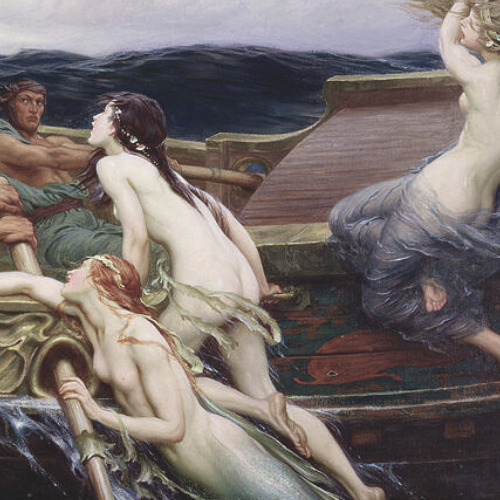

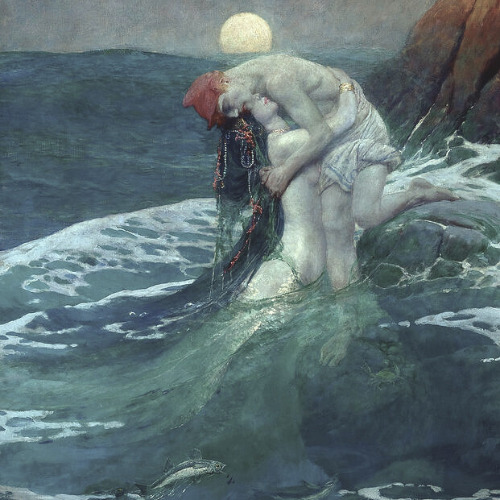

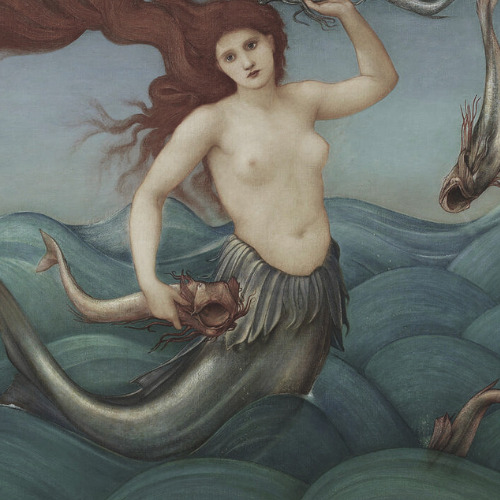




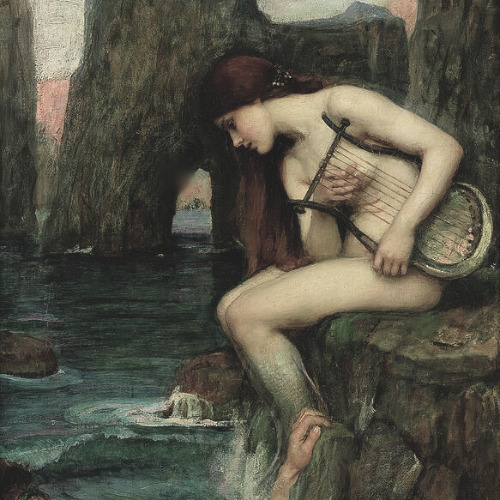
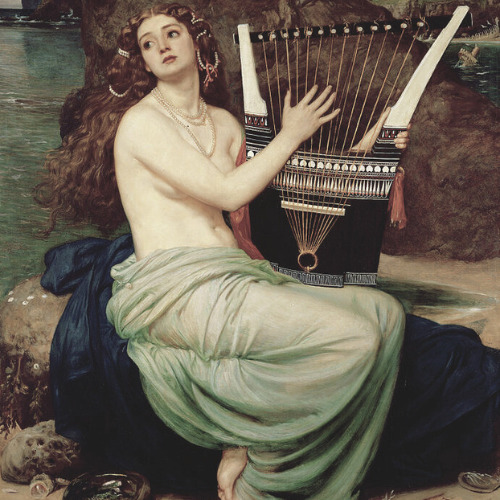


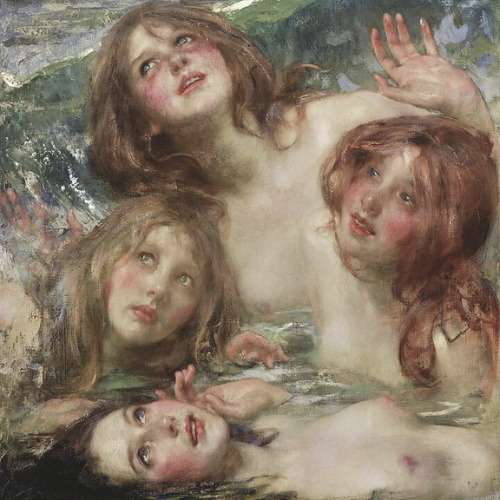

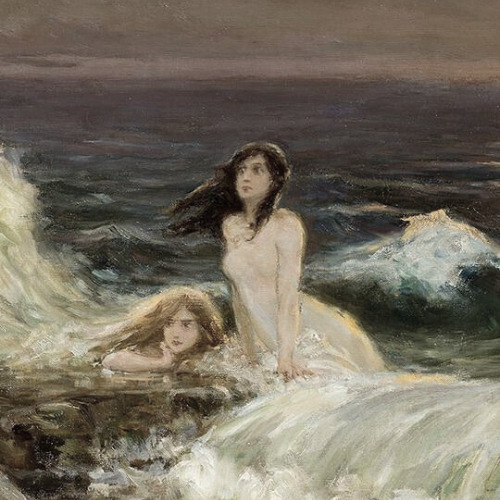



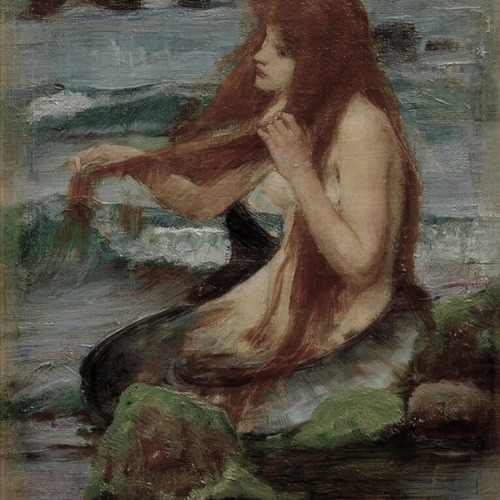


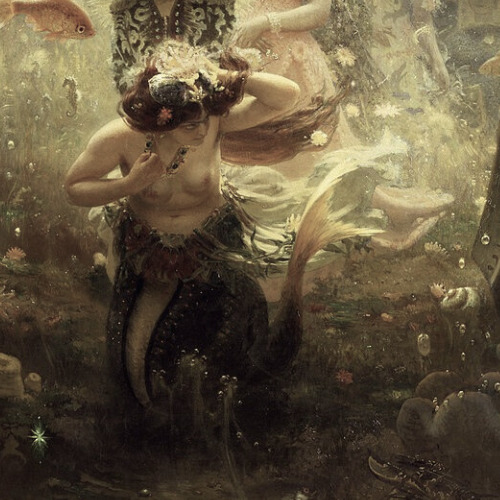

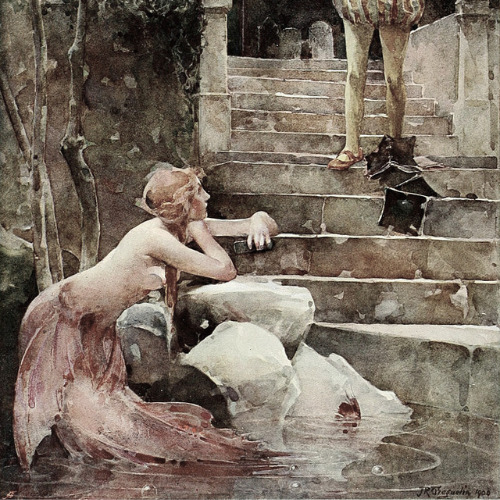


creatures in art: mermaids & sirens
#artist is herbert james draper#artist is john william waterhouse#artist is howard pyle#artist is frederic leighton#artist is edward burne jones#artist is gustav wertheimer#artist is henry paul perrault#artist is hermann corrodi#artist is evelyn de morgan#-artist is john william waterhouse#artist is sir edward john poynter#artist is eilhu vedder#artist is jean-francis auburtin#artist is sir james jebusa shannon#artist is charles santore#artist is wilhelm kotarbinski#artist is unknown#artist is gaston hoffmann#artist is ferdinand leeke#artist is john william waterhouse--#artist is edward frederick brewtnall#artist is elisabeth jerichau-baumann#artist is llya repin#artist is john collier#artist is john reinhard weguelin#artist is e.s hardy#artist is unknown-#art history#art#artedit
1K notes
·
View notes
Text
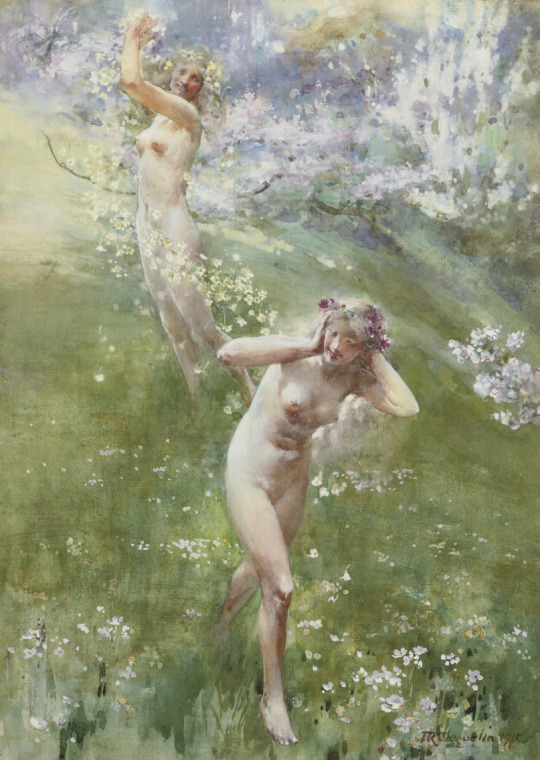
Gladsome Spring by John Reinhard Weguelin (1911)
#john reinhard weguelin#art#paintings#fine art#1910s#1910s art#academism#academicism#academic art#painting#watercolour#english artist#british artist#spring#forest nymph#dryad#flowers#classic art
718 notes
·
View notes
Text

John Rienhard Weguelin (British, 1849-1927) • The Magic of Pan's Flute • 1905 • Watercolor
#art#painting#fine art#watercolor painting#john reinhard weguelin#british artist#early 20th century british art#mythological painting#figurative painter#art nude#art history#pagan sphinx art blog#art appreciation#pan's flute#artwork#art blog
19 notes
·
View notes
Text

John Reinhard Weguelin (1849-1927)
"The Tired Dancer" (1879)
Oil on canvas
#paintings#art#artwork#genre painting#ancient rome#john reinhard weguelin#oil on canvas#fine art#english artist#british artist#female portrait#portrait of a woman#orange dress#dresses#costume#costumes#drapery#flower crown#tired#exhausted#tambourine#flower petals#1878#1870s#late 1800s#late 19th century#marble#rest#resting
407 notes
·
View notes
Text
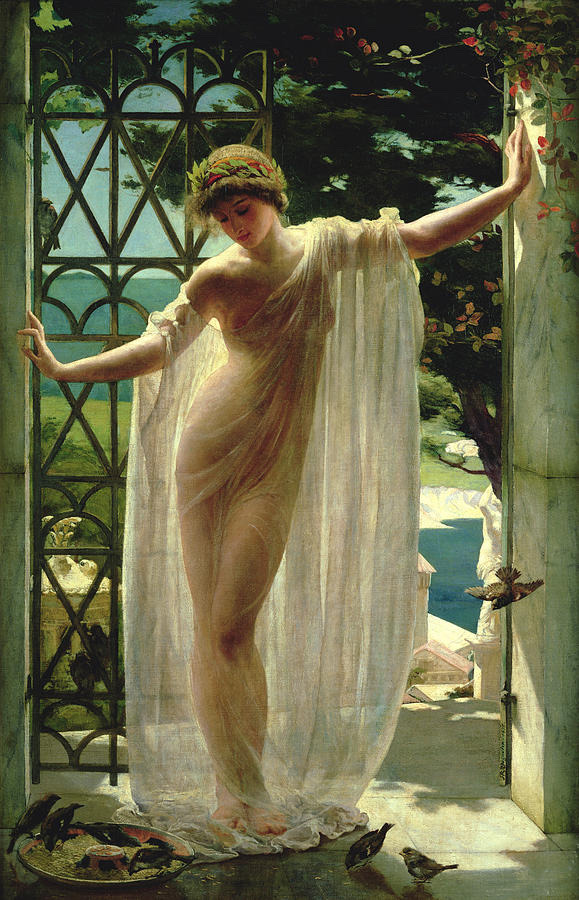
Lesbia by John Reinhard Weguelin (1878)
77 notes
·
View notes
Text

Lesbia
John Reinhard Weguelin
1878
15 notes
·
View notes
Photo





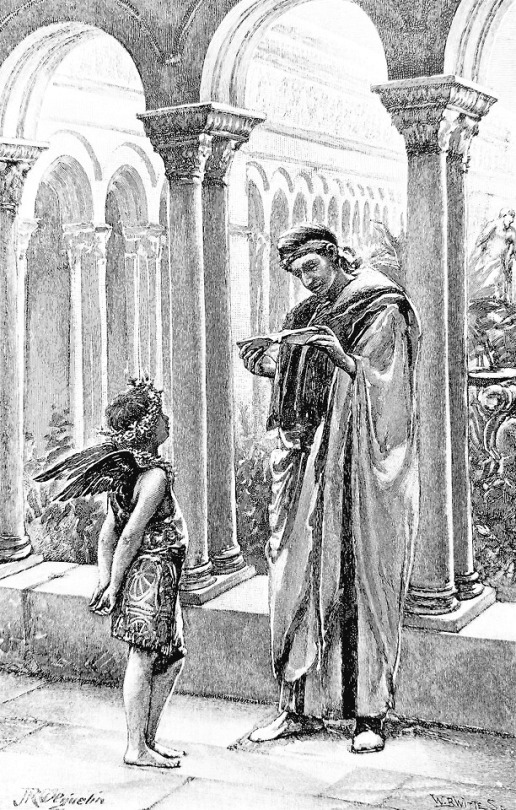
John Reinhard Weguelin (23 June 1849 – 28 April 1927)
English painter and illustrator, active from 1877 to after 1910. He specialized in figurative paintings with lush backgrounds, typically landscapes or garden scenes. Weguelin emulated the neo-classical style of Edward Poynter and Lawrence Alma-Tadema, painting subjects inspired by classical antiquity and mythology. He depicted scenes of everyday life in ancient Greece and Rome, as well as mythological subjects, with an emphasis on pastoral scenes. Weguelin also drew on folklore for inspiration, and painted numerous images of nymphs and mermaids. Weguelin was particularly noted for his realistic use of light. (Wikipedia)
From our stacks: Illustrations from The Wooing of Malkatoon. Commodus. By Lew. Wallace. Illustrations by Du Mond & Weguelin. New York and London: Harper & Brothers Publishers, 1898.
#john reinhard weguelin#weguelin#illustration#art#artist#illustrator#artists#illustrators#book#book illustration#commodus#vintage illustration#books#old books#poetry books#classicism#classical rome#roman#ancient rome#neo-classical#neo-classicism#arts#library books#detroit public library
387 notes
·
View notes
Photo
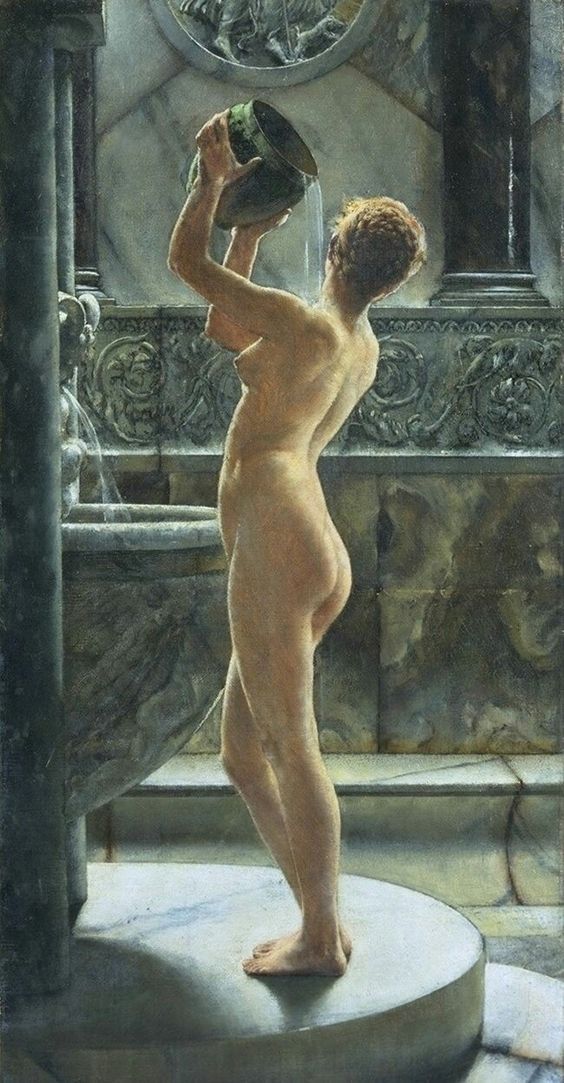
John Reinhard Wequelin, The Bath
297 notes
·
View notes
Text
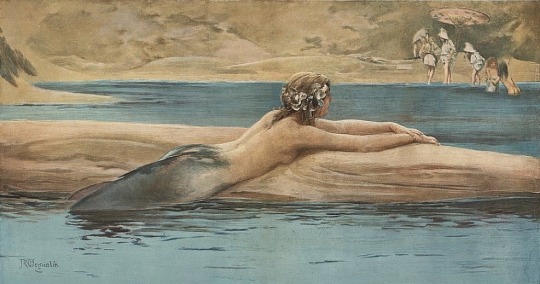
The Little Sea Maid
Artist : John Reinhard Weguelin
#John reinhard weguelin#the little sea mermaid#mermaid#sirena#sirene#sirène#lithograph#colour lithograph
293 notes
·
View notes
Text
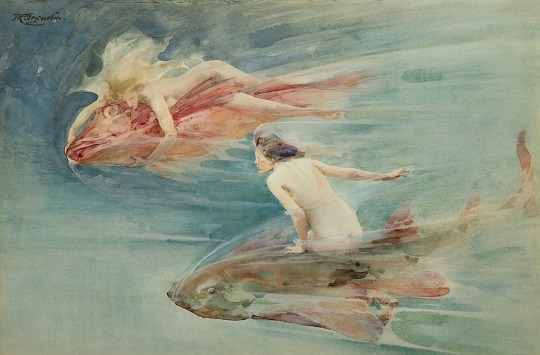

Racing Nymphs ~ 1906 ~ John Reinhard Weguelin (English artist, 1849-1927)
72 notes
·
View notes
Photo
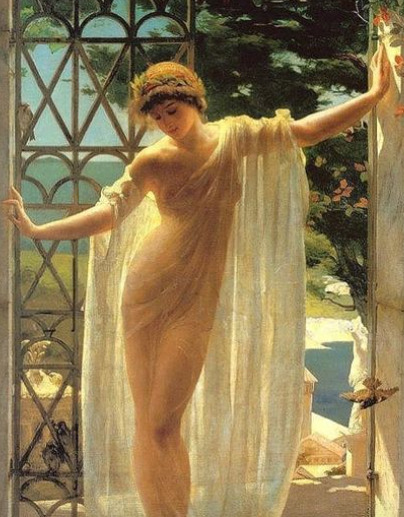
Lesbia by John Reinhard Weguelin
Read more:
Lesbia is a word making us musing about the contemporary similar sounding word of Lesbian. Although, in the Greek history both words are related at a point, the word Lesbia comprises much more history in it than the shallow modern meaning of the word connected with it.
There are two ways in history which leads us to the origin of the word Lesbia and also the woman called Lesbia depicted here. And both ways are connected to each other to some extent.
First is the Greek poet Sappho (630 BCE – 570 BCE). She was born on the island of Lasbos, and some historians claims that the modern word Lesbian derives from there as Sappho wrote some poems relating to women’s love of that island. She was effectuated by the beauty of the women of the island and wrote about them in her poems.
Another point in history for word Lesbia is Latin poet Catullus who used Lesbia as the pseudonym for the fictional woman whom he loved and on which his most of the love-poets were based. Historian claims that Lesbia was only a name to hide his real lover, Clodia, the wife of a Roman patrician. She was said to have an unhappy marriage and unfaithful relations with her husband. And among her numerous affairs with royals people as well as with slaves while being married, she also had affair with Catullus. Thus, while hiding his lover’s identity, Catullus wrote about Clodia under the name of Lesbia. This is a theory historians have come up with according to the clues and writing found in old texts, poems or other ancient references.
Saphho was born many centuries before Catullus and it is considered that one of Catullus’s poems is a direct translation of one of Sappho’s poem, which she wrote about the womanly love of the her hometown Lasbos.
Thus, the name Lesbia or such woman doesn’t show up anywhere on any page of the history. The name resides in Catullus’s poems or has some connections with Sappho’s dearly poems for her hometown and the women of the island. Thus, Lesbia herself is or can be an imaginary woman conjured up by the two poets to express their affections or love for the real persons in their lives.
The represented painting, titled Lesbia by John Reinhard Weguelin is surely depicting that same imaginary woman about whose Catullus mentioned in his poem. Her depiction is often times represented with a house sparrow by many artists. Catullus 2, one of the love-poems regarding to the fictional Lesbia by Catullus describes the relation of Lesbia with her beloved pet Sparrow. While Catullus 3 tells about Lesbia’s broken heart when the beloved sparrow dies.
Weguelin has included the second poem’s sparrows with the beauty of Lesbia for which the poet fell for.
Thus, this attractive and flawless depiction of the imaginary woman perfectly signifies the perfect imaginary woman, the poets dreamt in their poems – an impeccable beauty. Written by Nitin
2 notes
·
View notes
Photo

The Magic of Pan’s Flute by John Reinhard Weguelin (1905)
#john reinhard weguelin#art#paintings#fine art#1900s#1900s art#academism#academicism#academic art#painting#english artist#british artist#mythology#roman mythology#roman god#pan#faunus#tree nymph#dryad#classic art
1K notes
·
View notes
Text

17 Works, June 23rd. is John Reinhard Weguelin's day, his story, illustrated with footnotes #170
Please follow link for full post
John Reinhard Weguelin, Bacchus, Nymphs, Augustus, shepherdess, Zaidan, biography, Art, Paintings, Artists, History, footnotes, fine art, fineart,
1 note
·
View note
Text

Cupid Bound by the Nymphs by John Reinhard Weguelin (1896)
#john reinhard weguelin#art#paintings#fine art#19th century#19th century art#academism#academicism#academic art#painting#english artist#british artist#mythology#roman mythology#forest nymph#tree nymph#dryad#cupid#classic art
584 notes
·
View notes
Photo

John Reinhard Weguelin (1849-1927)
“The Obsequies of an Egyptian Cat” (1886)
Oil on canvas
Classicism
The painting depicts a priestess offering gifts of food and milk to the spirit of a cat. On the altar stands the mummy of the deceased, and the tomb is decorated with frescoes, urns of fresh flowers, lotus blossoms, and statuettes. In the background, a statue of either Sekhmet or Bastet guards the entrance to the tomb.
#paintings#art#artwork#genre painting#ancient egypt#john reinhard weguelin#oil on canvas#classicism#classical movement#history#ancient egyptian#cats#worship#1886#1880s#late 1800s#late 19th century#english art#british artist
605 notes
·
View notes
Photo

John Reinhard Weguelin (1849-1927), 'The Rainbow Lies in the Curve of the Sand', ''The Studio'', 1905
Source
#john reinhard weguelin#english artist#english painter#the rainbow lies in the curve of the sand#mermaid#mermaids#the studio#studio international#international art
130 notes
·
View notes